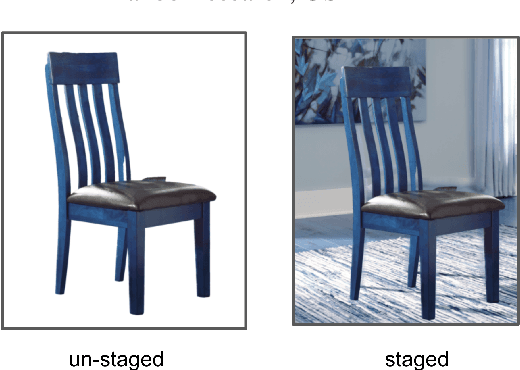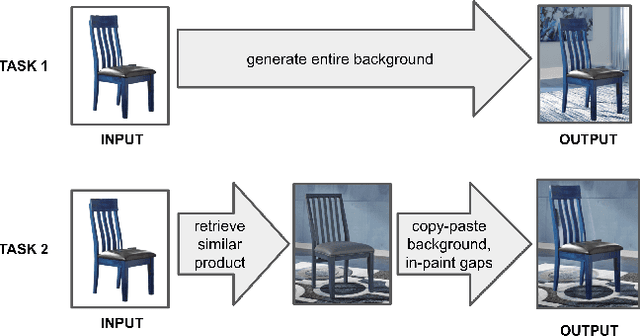Yueh-Ning Ku
Salient Object-Aware Background Generation using Text-Guided Diffusion Models
Apr 15, 2024Abstract:Generating background scenes for salient objects plays a crucial role across various domains including creative design and e-commerce, as it enhances the presentation and context of subjects by integrating them into tailored environments. Background generation can be framed as a task of text-conditioned outpainting, where the goal is to extend image content beyond a salient object's boundaries on a blank background. Although popular diffusion models for text-guided inpainting can also be used for outpainting by mask inversion, they are trained to fill in missing parts of an image rather than to place an object into a scene. Consequently, when used for background creation, inpainting models frequently extend the salient object's boundaries and thereby change the object's identity, which is a phenomenon we call "object expansion." This paper introduces a model for adapting inpainting diffusion models to the salient object outpainting task using Stable Diffusion and ControlNet architectures. We present a series of qualitative and quantitative results across models and datasets, including a newly proposed metric to measure object expansion that does not require any human labeling. Compared to Stable Diffusion 2.0 Inpainting, our proposed approach reduces object expansion by 3.6x on average with no degradation in standard visual metrics across multiple datasets.
Staging E-Commerce Products for Online Advertising using Retrieval Assisted Image Generation
Jul 28, 2023



Abstract:Online ads showing e-commerce products typically rely on the product images in a catalog sent to the advertising platform by an e-commerce platform. In the broader ads industry such ads are called dynamic product ads (DPA). It is common for DPA catalogs to be in the scale of millions (corresponding to the scale of products which can be bought from the e-commerce platform). However, not all product images in the catalog may be appealing when directly re-purposed as an ad image, and this may lead to lower click-through rates (CTRs). In particular, products just placed against a solid background may not be as enticing and realistic as a product staged in a natural environment. To address such shortcomings of DPA images at scale, we propose a generative adversarial network (GAN) based approach to generate staged backgrounds for un-staged product images. Generating the entire staged background is a challenging task susceptible to hallucinations. To get around this, we introduce a simpler approach called copy-paste staging using retrieval assisted GANs. In copy paste staging, we first retrieve (from the catalog) staged products similar to the un-staged input product, and then copy-paste the background of the retrieved product in the input image. A GAN based in-painting model is used to fill the holes left after this copy-paste operation. We show the efficacy of our copy-paste staging method via offline metrics, and human evaluation. In addition, we show how our staging approach can enable animations of moving products leading to a video ad from a product image.
 Add to Chrome
Add to Chrome Add to Firefox
Add to Firefox Add to Edge
Add to Edge